Recently Added Document
- Passing on the Polio legacy- Social Mobilization Network Deployment to new locations
- Guidelines for the use of the Communication kit for the tOPV to bOPV SWITCH
- tOPV to bOPV SWITCH FAQs for Cold Chain Handlers and ANMs-English
- tOPV to bOPV FAQs for Cold Chain Handlers and ANMs-Hindi
- tOPV to bOPV SWITCH Fact Sheet-English
- tOPV to bOPV SWITCH Fact Sheet-Hindi
- tOPV to bOPV SWITCH Segregation Tape-Bilingual
- tOPV to bOPV SWITCH job aid for Cold Chain Points-English
- tOPV to bOPV SWITCH job aid for Cold Chain Points-Hindi
- tOPV to bOPV Poster for Cold Chain Points-English
- tOPV to bOPV Poster for Cold Chain Points-Hindi
- E-Brochure: Before the tOPV to bOPV SWITCH
- E-Brochure: After the tOPV to bOPV SWITCH
- SMSes for tOPV to bOPV SWITCH
History of polio in India
-
1994
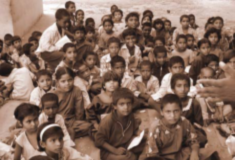 A pilot polio immunization activity is conducted in Delhi, targeting one million children up to three years of age.
A pilot polio immunization activity is conducted in Delhi, targeting one million children up to three years of age. -
1995
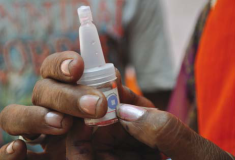 India launches its first nationwide polio immunization campaign. A National Immunization Day is held to immunize all children up to the age of three years. A total of 88 million children immunized.
India launches its first nationwide polio immunization campaign. A National Immunization Day is held to immunize all children up to the age of three years. A total of 88 million children immunized. -
1997
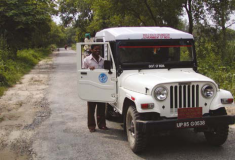 The National Polio Surveillance Project (NPSP) is established for poliovirus surveillance. A collaboration of World Health Organization and the Government of India, NPSP recruits 57 surveillance medical officers (SMOs).
The National Polio Surveillance Project (NPSP) is established for poliovirus surveillance. A collaboration of World Health Organization and the Government of India, NPSP recruits 57 surveillance medical officers (SMOs). -
1999
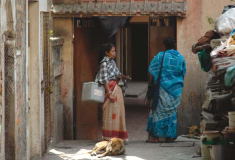 Type 2 poliovirus eradicated. Last global case of type 2 polio is reported in Aligarh, Uttar Pradesh. House-to-house strategy begins. 159 million children immunized. India divided into high, medium and low-risk states. Sub-National Immunization Days held in medium and high-risk states. The India Expert Advisory Group for polio (IEAG) constituted.
Type 2 poliovirus eradicated. Last global case of type 2 polio is reported in Aligarh, Uttar Pradesh. House-to-house strategy begins. 159 million children immunized. India divided into high, medium and low-risk states. Sub-National Immunization Days held in medium and high-risk states. The India Expert Advisory Group for polio (IEAG) constituted. -
2001
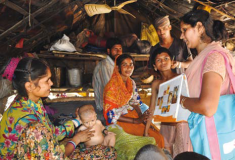 UNICEF establishes the Social Mobilization Network (SMNet) in Uttar Pradesh to mobilize community for polio immunization. Amitabh Bachchan becomes UNICEF Brand Ambassador for Polio.
UNICEF establishes the Social Mobilization Network (SMNet) in Uttar Pradesh to mobilize community for polio immunization. Amitabh Bachchan becomes UNICEF Brand Ambassador for Polio. -
2002
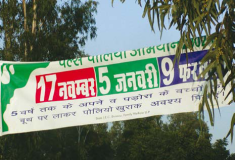 Taking over from private donors, the Government of India takes the lead role in financing polio eradication activities in the country using its own resources. WHO-NPSP expands network. The over 200 surveillance medical officers now support planning and monitoring of polio campaigns in addition to surveillance. Rotary International hosts first Polio Summit in India.
Taking over from private donors, the Government of India takes the lead role in financing polio eradication activities in the country using its own resources. WHO-NPSP expands network. The over 200 surveillance medical officers now support planning and monitoring of polio campaigns in addition to surveillance. Rotary International hosts first Polio Summit in India. -
2003
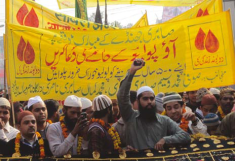 The under-served strategy is introduced as part of communication efforts in Uttar Pradesh to reach out to and get support of marginalized sections of the society for polio eradication. UNICEF expands the Social Mobilization Network to Bihar.
The under-served strategy is introduced as part of communication efforts in Uttar Pradesh to reach out to and get support of marginalized sections of the society for polio eradication. UNICEF expands the Social Mobilization Network to Bihar. -
2004
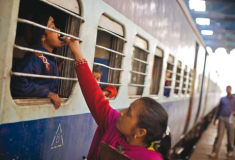 Poliovirus surveillance increases in sensitivity. The programme is now able to rapidly detect poliovirus transmission anywhere in the country. Transit vaccination strategy launched, with teams stationed at bus stands, railway stations, highways, markets and at congregation sites. Rotary International hosts second Polio Summit in India to accelerate Polio eradication.
Poliovirus surveillance increases in sensitivity. The programme is now able to rapidly detect poliovirus transmission anywhere in the country. Transit vaccination strategy launched, with teams stationed at bus stands, railway stations, highways, markets and at congregation sites. Rotary International hosts second Polio Summit in India to accelerate Polio eradication. -
2005
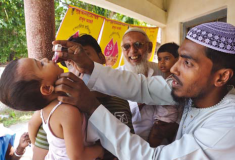 More effective monovalent oral polio vaccines (mOPV), tackling either type 1 or type 3 wild poliovirus, introduced. Social mobilization intensifies, with enhanced involvement of religious leaders, Muslim institutions, mosques and madrasas. Influencers from within the community are identified and assigned to vaccination teams to enhance acceptance of polio vaccine.
More effective monovalent oral polio vaccines (mOPV), tackling either type 1 or type 3 wild poliovirus, introduced. Social mobilization intensifies, with enhanced involvement of religious leaders, Muslim institutions, mosques and madrasas. Influencers from within the community are identified and assigned to vaccination teams to enhance acceptance of polio vaccine. -
2006
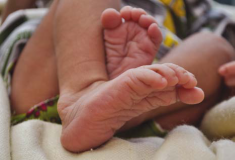 Enumeration, vaccination and tracking of newborns begins in UP and Bihar. The vaccinators are given a special booklet to register all newborns and immunize them for at least eight polio rounds. Operational strengthening takes place to improve microplanning for revisits to households with unvaccinated children following the first contact with vaccinators.
Enumeration, vaccination and tracking of newborns begins in UP and Bihar. The vaccinators are given a special booklet to register all newborns and immunize them for at least eight polio rounds. Operational strengthening takes place to improve microplanning for revisits to households with unvaccinated children following the first contact with vaccinators. -
2007
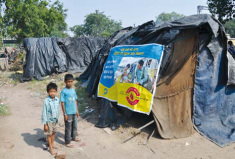 Rotary International forms Ulemas' Committee in UP to enhance Muslim community support. Accelerated immunization rounds take place almost monthly in polio-endemic states of UP and Bihar, using efficacious mOPVs. Migrant strategy introduced. People moving out of the endemic states with families are identified and immunized in Punjab, Gujarat, West Bengal, Maharashtra, Delhi.
Rotary International forms Ulemas' Committee in UP to enhance Muslim community support. Accelerated immunization rounds take place almost monthly in polio-endemic states of UP and Bihar, using efficacious mOPVs. Migrant strategy introduced. People moving out of the endemic states with families are identified and immunized in Punjab, Gujarat, West Bengal, Maharashtra, Delhi. -
2008
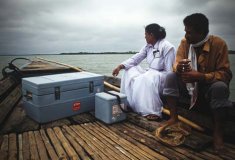 Kosi River Plan drawn up to intensify and focus efforts in Bihar. High-risk blocks are mapped, and additional stay points built for enhanced supervision and efforts in the hardest-to-reach areas where children are being missed. WHO-NPSP further expands - 333 surveillance medical officers on the ground cover all parts of India.
Kosi River Plan drawn up to intensify and focus efforts in Bihar. High-risk blocks are mapped, and additional stay points built for enhanced supervision and efforts in the hardest-to-reach areas where children are being missed. WHO-NPSP further expands - 333 surveillance medical officers on the ground cover all parts of India. -
2009
 107 Block Plan is introduced in UP and Bihar. Underlying factors for polio are targeted: routine immunization, sanitation, diarrhea management and exclusive breastfeeding. Focus on migrant populations in brick kilns, construction sites, slums and nomadic settlements. Rotary pledges US$200 million against Bill & Melinda Gates Foundation's pledge of US$355 million.
107 Block Plan is introduced in UP and Bihar. Underlying factors for polio are targeted: routine immunization, sanitation, diarrhea management and exclusive breastfeeding. Focus on migrant populations in brick kilns, construction sites, slums and nomadic settlements. Rotary pledges US$200 million against Bill & Melinda Gates Foundation's pledge of US$355 million. -
2010
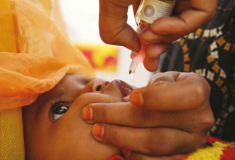 Bivalent oral polio vaccine (bOPV), which tackles both type 1 and 3 wild poliovirus serotypes concurrently, introduced in India. The Government of India, through the India Expert Advisory Group on polio eradication, recommends responding to each case of polio as a public health emergency.
Bivalent oral polio vaccine (bOPV), which tackles both type 1 and 3 wild poliovirus serotypes concurrently, introduced in India. The Government of India, through the India Expert Advisory Group on polio eradication, recommends responding to each case of polio as a public health emergency. -
2011
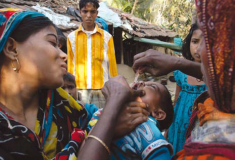 Aggressive response to the lone case of polio in Howrah, West Bengal. A large-scale mop-up immunization activity is launched within seven days of notification of the case, with three additional mopup rounds conducted in seven weeks from confirmation of the case. All States and Union Territories prepare Emergency Preparedness and Response Plans (EPRPs) to respond to any case of wild poliovirus as a public health emergency.
Aggressive response to the lone case of polio in Howrah, West Bengal. A large-scale mop-up immunization activity is launched within seven days of notification of the case, with three additional mopup rounds conducted in seven weeks from confirmation of the case. All States and Union Territories prepare Emergency Preparedness and Response Plans (EPRPs) to respond to any case of wild poliovirus as a public health emergency. -
2012
 India removed from the list of polio endemic countries after completing a year without reporting any case of polio in January, a major milestone in the history of polio eradication.
India removed from the list of polio endemic countries after completing a year without reporting any case of polio in January, a major milestone in the history of polio eradication.

